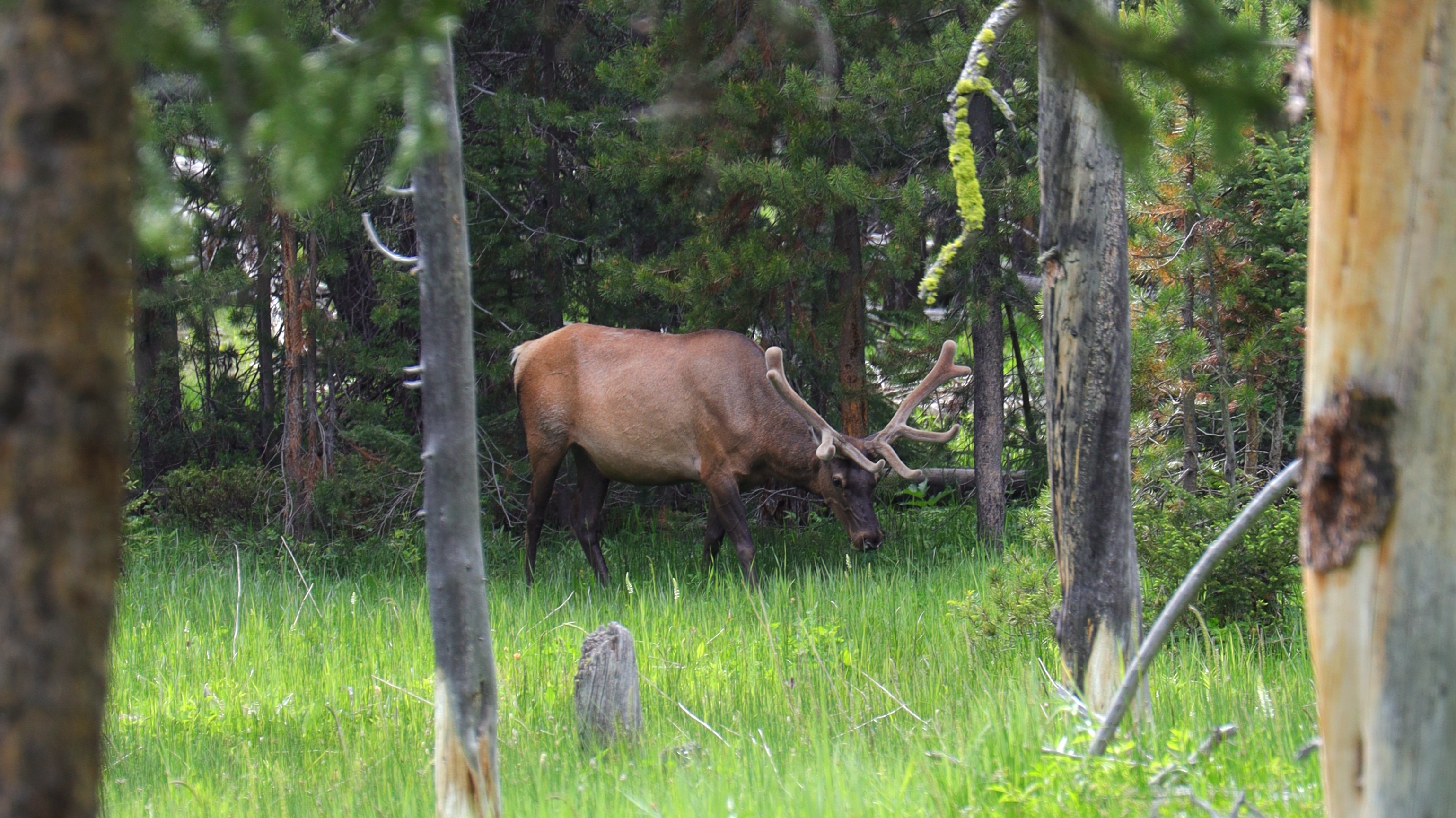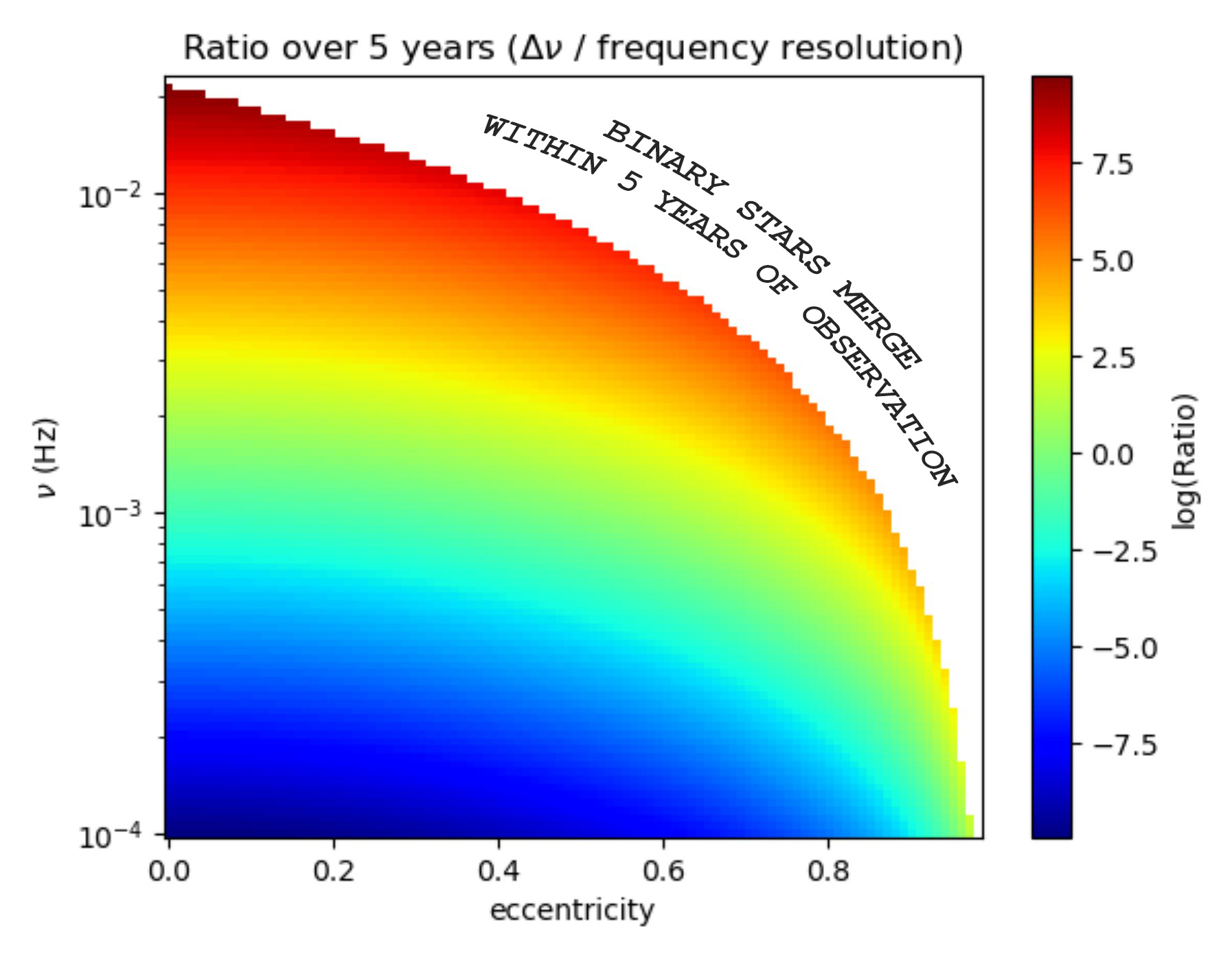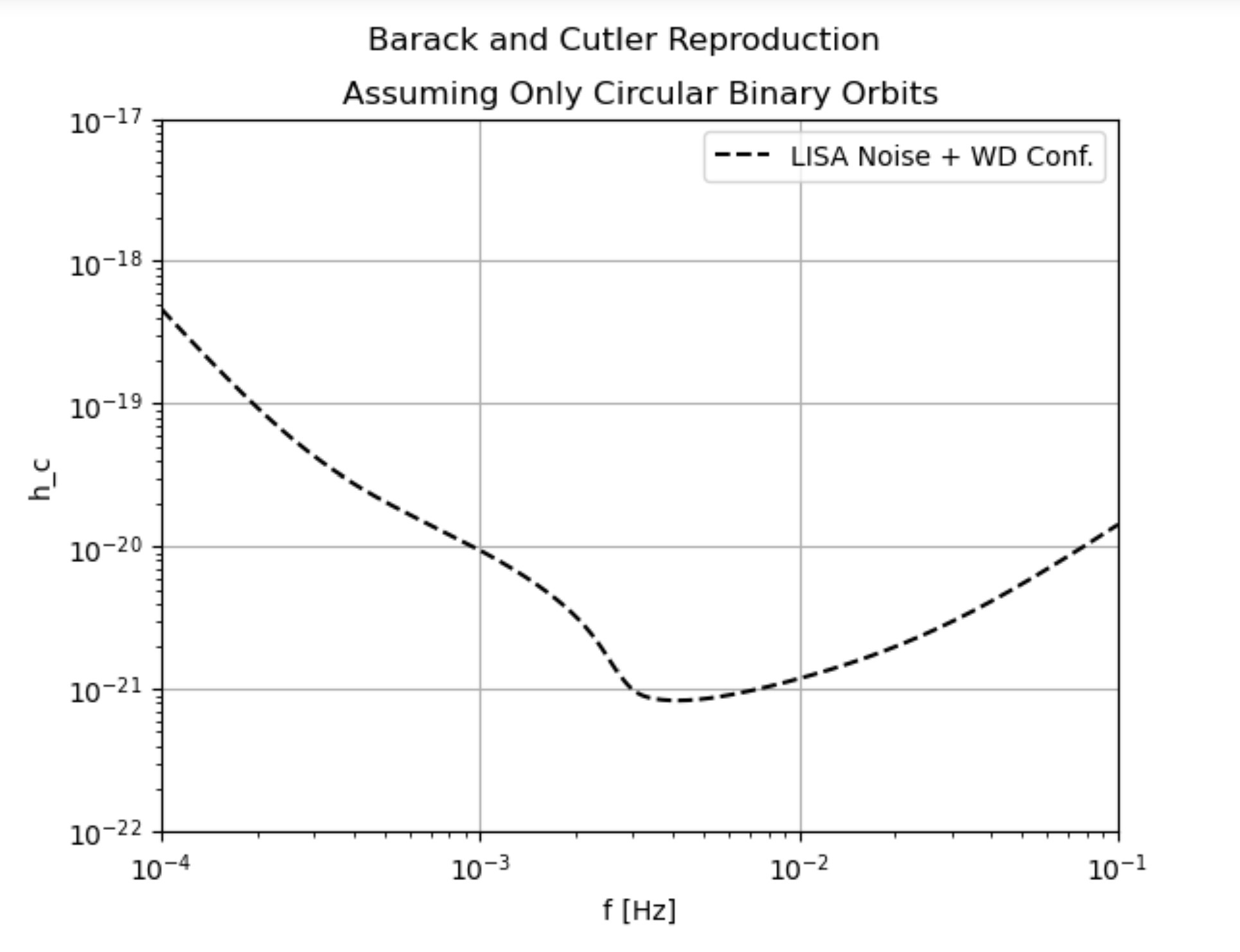Week 3
Strain
This week I did a lot of work in understanding how LISA will measure gravitational waves, and reproducing results from previous publications to ensure my understanding of the material. LISA makes detections by being ever so slightly displaced as a graviational waves passes across it, and we measure this 'strain' on the sensor as a function of frequency. It's an intriguing calculation that depends on the distance to the source, the rate of change of the frequency of the graviational waves, and the power radiated to infinity (this value depends on the g(n,e) I calculated last week that determines the relaitive strength of our harmonics). With that understanding in mind, I reproduced a figure that demonstrates the evolution of a system composed of a 1 solar mass white dwarf and 1 million solar mass massive black hole, given some intitial orbital eccentricty and frequency. I then calculated the evolution of strain per harmonic for this same system. See the plots below.
Oh yeah, we also went to Yellowstone for a day!





Week 4
DeltaNu vs. Resolution and LISA Noise Profile
This week I learned how to use a numpy meshgrid. Talk about a handy tool! I used it to produce an original plot which given a set of intitial conditions tells you how well LISA should be able to resolve an individual binary white dwarf system. I calculate the change in orbital frequency over a given timescale and the time resolution. If the ratio of these two things is greater than 1 we can see the system. If it is less than 1, we won't be able to resolve the system. This plot provides useful insight given that LISA is only planned to observe for 5 years. This can tell us what type of systems we should expect to see. I also reproduced a plot from Barack and Cutler that demonstrates the LISA instrument noise and galactic WD confusion noise. However, this plot assumes only perfectly circular orbits. Our goal is to model this confusion noise contribution assuming a population with a distribution of eccentricities! That means our curve will look different than this, probably.


This friday, we each gave our 4th week update presentation.